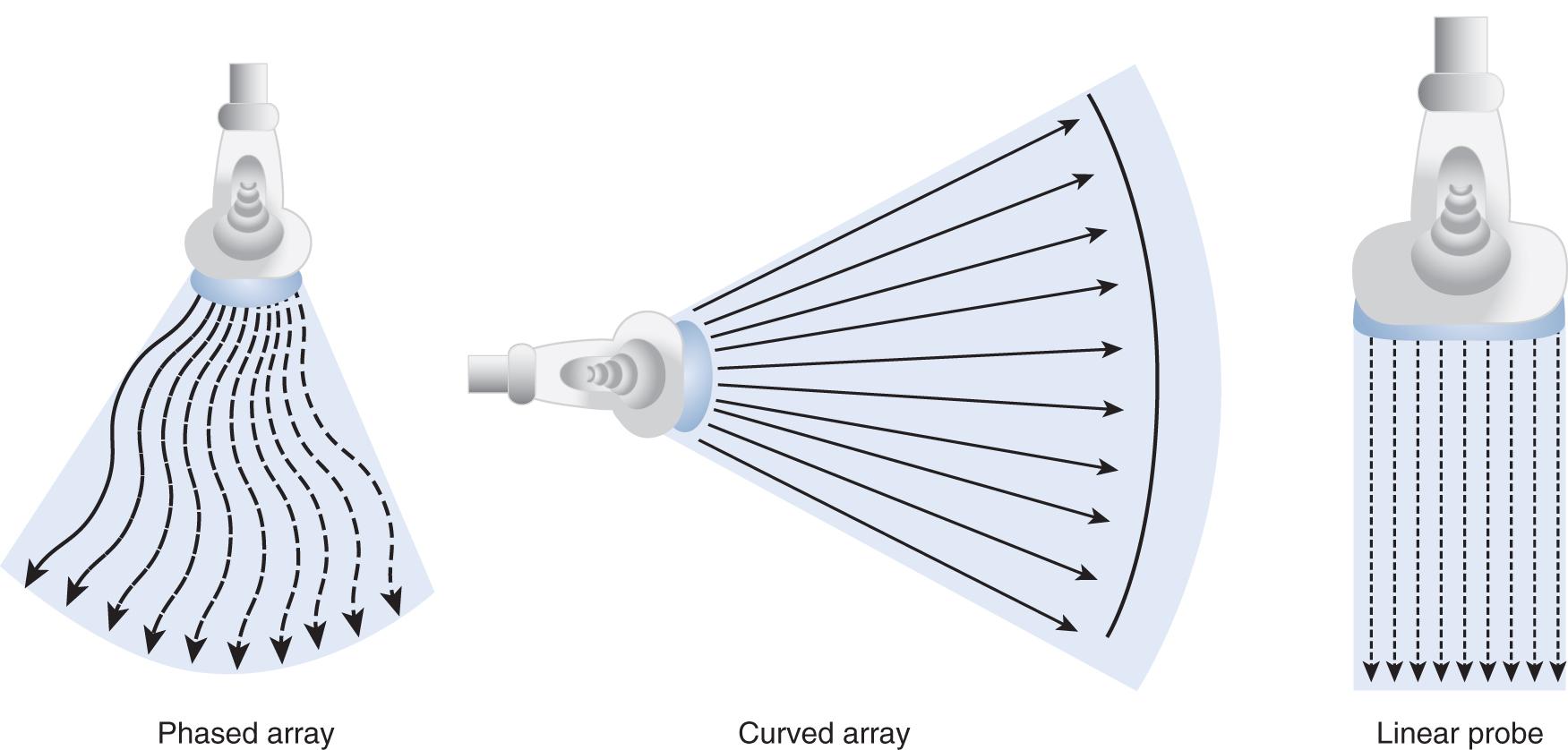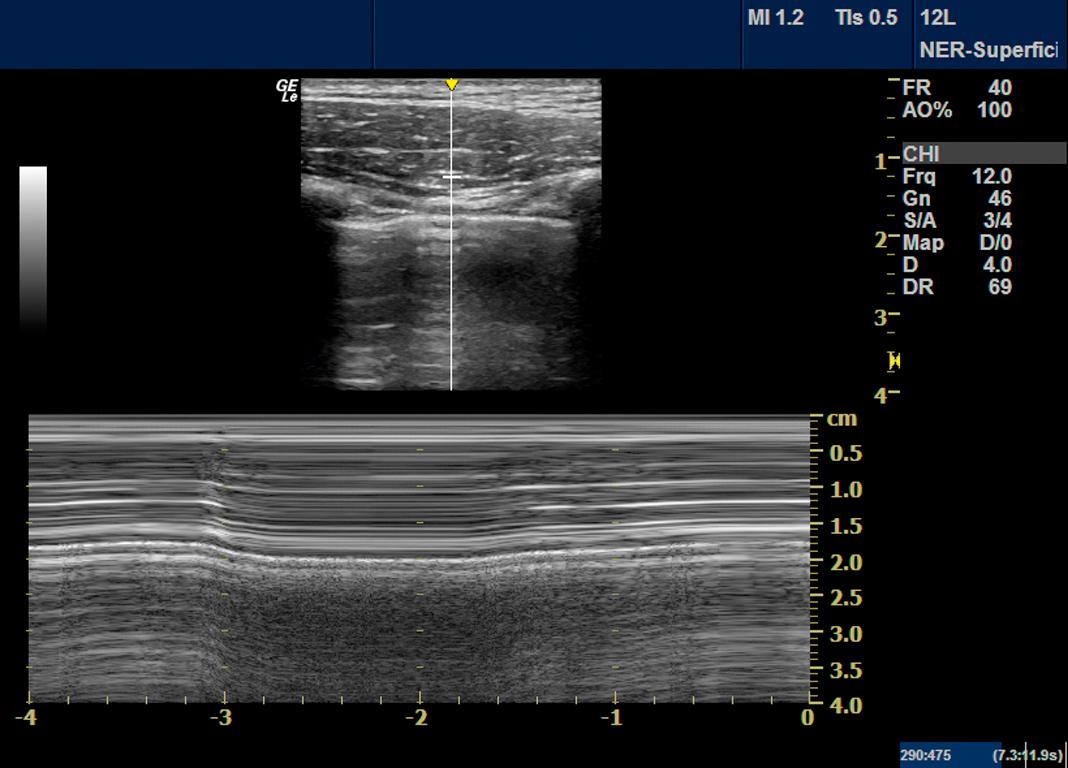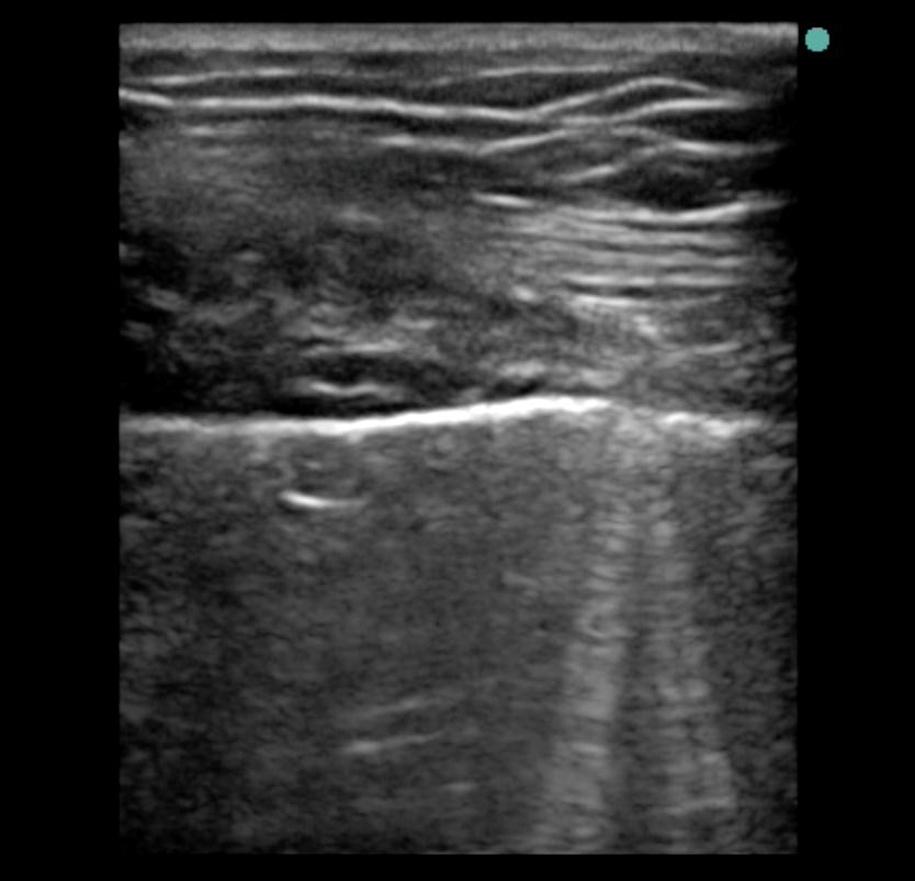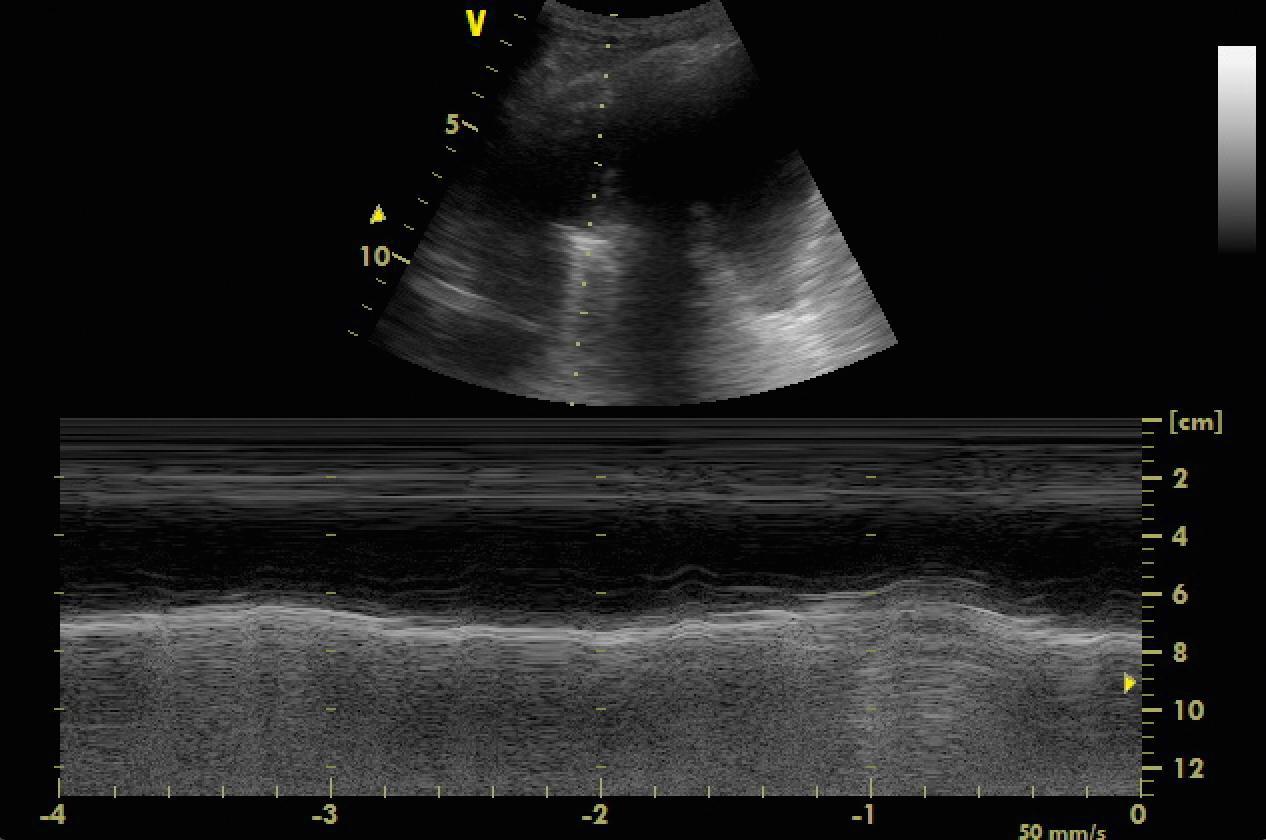Physical Address
304 North Cardinal St.
Dorchester Center, MA 02124
Recent advances in ultrasound technology have allowed ultrasound instruments to become smaller, more portable, and less expensive, so that this powerful imaging tool can be readily and repeatedly used in everyday intensive care unit (ICU) care. The concept of point-of-care ultrasound (POCUS) refers to the use of portable ultrasonography at the patient’s bedside for diagnostic and therapeutic purposes. The provider acquires and interprets all images in real time and then uses that information to diagnose and direct therapy. Although comprehensive imaging can also be performed and interpreted at the point of care, the term POCUS typically refers to an ultrasound examination that is simple, rapid, and goal-oriented. It is a tool used most often to provide answers to acute “yes or no” clinical questions, but interpretations can be more nuanced, depending on the provider’s qualifications, experience, and skill. Indeed, POCUS has been identified as a separate imaging modality with defined routes for training, reporting, and billing. ,
In the acute care setting, this modality has demonstrated utility for nearly every component of bedside assessment, including cardiac, pulmonary, hemodynamic, vascular, neurologic, and gastrointestinal status. Recent evidence has demonstrated improved diagnostic accuracy for each of these systems after the operator receives training from a cost-free online curriculum ( www.foresightultrasound.com ).
This chapter seeks to review the current use of POCUS in the critical care setting. Specifically this chapter will discuss the following areas: (1) ultrasound physics and probe selection, (2) assessment of pulmonary status, (3) advanced vascular access, and (4) additional areas of assessment. Chapter 31 provides a thorough discussion of echocardiography, including the echocardiographic assessment of intravascular volume status (preload responsiveness) and the use of echocardiography to diagnose shock and monitor response to treatment. Training on these topics using a model simulation–based educational curriculum has been shown be effective and to positively affect patient care.
Clinical ultrasound systems use transducers that emit and detect sound waves with a frequency between 2 and 27 MHz. Image production depends on the strength of the returning ultrasound signal and relates directly to the angle at which the ultrasonic beam strikes the acoustic interface. The ultrasound signal is described by its frequency and wavelength. A shorter wavelength (i.e., a higher frequency) provides better resolution but less penetration into tissues. Therefore higher-frequency probes (5–10 MHz) provide better resolution but are useful only for imaging superficial structures. Lower-frequency probes (2–5 MHz) provide better penetration but have lower resolution. Probe selection is based on matching the properties of the ultrasound probe with the particular structure that one is trying to image. Besides frequency, additional properties of the probe include the footprint (area emitting the ultrasound) and shape. Typical phased-array probes emit at 3–5 MHz, have a small footprint, and produce a wide ultrasound image by sending out packets of ultrasound that are stitched together. Curved linear probes emit at 4–7 MHz, have a large footprint, and are ideal for imaging of abdominal structures. These probes generate a wide image because of the way the ultrasound waves are emitted. Linear probes emit at 10–27 MHz and are used for imaging superficial structures ( Fig. 30.1 ).

Acoustic gel is used to minimize the difference in acoustic impendence from the probe to the skin. Standard 2D image creation is called B-mode (brightness mode). In this mode, there is a change in spot brightness for each ultrasound signal received by the transducer. M-mode (motion mode) is a graphic B-mode pattern that is a single screen line of ultrasound signal displayed over time and is used primarily to assess the motion of structures along the ultrasound beam. Doppler ultrasound is a modality that is used to determine direction and intensity of vascular flow by assessing the change in velocities secondary to the motion of the structure of interest (usually red blood cells). It is important to remember that Doppler signals are more accurate when the ultrasound signal is parallel to the direction of flow. With color Doppler, the Doppler echoes are displayed with colors corresponding to the direction of flow. With continuous wave Doppler, one assesses the summation of velocities of flow along a line of the ultrasound signal. With pulse wave Doppler, one is able to assess flow velocity in an exact location, but with the limitation of only being able to assess a restricted range of velocities. From each transducer position, the targeted structure is characterized by five major probe movements: (1) slide refers to motion in the long axis of the probe along the body, (2) rock refers to motion along the long axis of probe at a fixed point of the body, (3) sweep refers to motion in the short axis of the probe along the body, (4) fan refers to motion along the short axis of the probe at a fixed point of the body, and (5) rotation refers to moving the probe in a clockwise or counterclockwise direction.
When applicable to the condition or problem at hand, ultrasound assessment of pulmonary disorders holds potential value for the critical care physician. Ultrasound may provide noninvasive, immediate bedside diagnosis, unlike a computed tomography (CT) scan, which requires transporting the patient. Ultrasound is especially useful in pregnant and pediatric patients, where minimizing radiation exposure is important. However, lung ultrasound does have some limitations. Central lung pathologies and areas under the ribs or scapula cannot be visualized. Examination of obese patients is difficult. Examination of trauma patients with subcutaneous emphysema is difficult or impossible.
Performing an ultrasound for detection of pneumothorax is a simple, easily learned technique. Studies showed that inexperienced, recently trained personnel produced high detection rates for pneumothorax. , Ultrasound of the lung relies on the physical principle that fluid collects in gravitationally dependent areas, whereas gas collects superiorly. Therefore positioning the patient appropriately for the examination is critical. In reporting the findings, the physician should specify both the patient’s position (e.g., sitting, supine, right side down, or left side down) and the location of the probe. Probe placement should be posterior and inferior for detection of fluid but anterior and superior for detection of air. Although the probe can be placed transversely between two ribs, longitudinal placement with a view of the ribs is recommended because of the enhanced orientation provided by the rib shadows.
The curvilinear probe provides the best visualization of the pleural cavity. Although the lower frequency of 4–5 MHz does not allow the distinction of visceral from parietal pleura, it does permit visualization of normal lung “sliding” along the pleural surface and detection of air artifacts.
One of the initial steps in performing ultrasound of the lung is to visualize the diaphragm, which is a curvilinear hyperechoic structure that descends with every breath. The liver on the right side and the spleen on the left side serve as landmarks during this initial visualization.
A subcostal or transdiaphragmatic abdominal approach can also be used to visualize the pleural cavity, but a potential difficulty of this view is that “concave” organs, such as the spleen, may reverberate, producing artifacts that appear to be dense lesions in the pleural cavity.
A normal ultrasound image of the lung will have the following features:
Lung sliding: As the lung inflates or deflates, the visceral pleura moves against the parietal pleural. The ultrasound images show this to-and-fro pleural movement, called lung sliding. Lung sliding is more prominent at the lung bases than at the apex. It is absent in the presence of intervening pleural air (pneumothorax) or fluid (pleural effusion). Inflammation that causes adherence of the two pleural membranes will also lead to absence of lung sliding. In M-mode, lung sliding can be best seen with the muscle and parietal pleura represented as static horizontal lines above the to-and-fro movement of the visceral pleura and lung, which appears granular. This appearance on M-mode is called the seashore sign ( Fig. 30.2 ).

A-lines: These are motionless horizontal reverberations of the pleural lining that give a regularly spaced, hyperechoic artifact on the ultrasound image.
B-lines: Also called ultrasound lung comets, B-lines may be considered the ultrasonic equivalent of radiologic Kerley B-lines that indicate lung edema. These artifacts have seven features: (1) have a “hydroaeric” comet tail, (2) are hyperechoic, (3) are well-defined, (4) arise from the pleural lining, (5) are associated with disappearance of A-lines, (6) move with lung sliding when present, and (7) feature a pattern of indefinite spreading in a cephalad direction. B-lines are artifacts of water-thickened interlobular septa and indicate increasing amounts of extravascular pulmonary edema, such as occurs in congestive heart failure ( Fig. 30.3 ).

The pleural cavity is quite accessible to ultrasound visualization. Pleural effusions are best seen in dependent areas of the chest: that is, posterior or inferior areas. The fluid is bounded inferiorly by the diaphragm and peripherally by the visceral and parietal pleural margins. With respiration, the visceral pleura should move toward the parietal pleura, producing a sinusoid sign with M-mode, which is highly specific (97%) for the presence of a pleural effusion ( Fig. 30.4 ). At times, the lung may appear to be floating in the pleural liquid. A positive sinusoid sign can detect the presence of a low-viscosity pleural effusion, but it may be falsely negative if the pleural fluid is highly viscous.

Ultrasound is more sensitive and specific than either auscultation or chest x-ray and therefore is the method of choice to evaluate pleural effusions. , Effusions that produce a 1-cm thickness in dependent zones are easily detected, with accuracy exceeding 90%. Anterior presentation of an effusion suggests that it is abundant. When large effusions are present, deeper structures can be visualized, such as a consolidated lung or the mediastinal contents. A large effusion may reveal air artifacts in the lung and allow the examiner to differentiate consolidated from aerated lung.
With experience, the examiner can estimate the volume of effusion as mild, moderate, or large. The echogenicity of an exudate allows the examiner to make an educated guess as to whether it is a transudate or an exudate; all transudates are anechoic, whereas exudative effusions are usually echogenic.
Hemothorax and purulent pleurisy present similar ultrasound patterns. Hemothorax produces an echogenic signal, indicating numerous particles floating within the effusion. In rare cases, the entire pleural cavity might be hypoechoic, mirroring the accompanying “whiteout” seen on chest x-ray. CT will be diagnostically helpful in these cases.
Ultrasound can facilitate thoracentesis. The patient should be positioned in a sitting or lateral decubitus position. It is important that the patient remain in the same position throughout the localization of the lesion and the subsequent procedure. Before performing thoracentesis, the operator should verify that the effusion is at least 1.5 cm thick and is visible over at least three intercostal spaces. The operator should identify the most dependent part of the pleural cavity and carefully insert the needle under direct (real-time) ultrasound visualization, making every effort to avoid accidental puncture of other structures during the process. Ultrasound-guided thoracentesis is safe in mechanically ventilated patients. After aspiration or biopsy, small pigtail catheters can be inserted and left in place for continuous drainage of the effusion.
Common practice in POCUS of the lung parenchyma is the evaluation of B-lines. The number of B-lines correlates with the amount of extracellular lung water and the pulmonary wedge pressure ( P < .001). Three or more B-lines in a single view are called B+ lines and represent interstitial edema. The presence of B-lines in a patient with acute dyspnea, evaluated together with measurement of circulating N-terminal pro B-type natriuretic peptide and the Framingham criteria, helps distinguish between cardiogenic and noncardiogenic pulmonary edema ( P < .001). The presence of nine or more B-lines has been reported as 100% specific for cardiogenic dyspnea. Ultrasound may be more than 90% sensitive and specific for acute cardiogenic pulmonary edema. Therefore when combined with bedside echocardiography to evaluate cardiac function, the diagnosis of congestive heart failure can be confirmed before administering a diuretic.
Become a Clinical Tree membership for Full access and enjoy Unlimited articles
If you are a member. Log in here